Mirka Knaster interview: Intuitive and improvisational
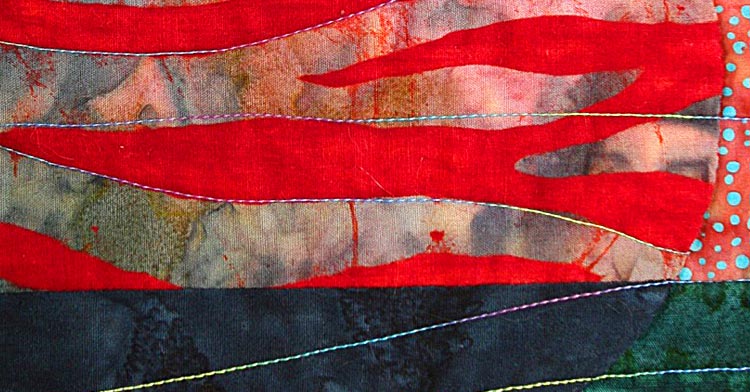
Textile artist and writer Mirka Knaster was born in Italy and educated in America. Her studio and home is located along the coast of northern California where she creates her abstract geometric art quilts. Mirka explores the connection between spirituality and art, defining an aesthetic preference for “simple elegance” or “elegant simplicity.”
In our interview with Mirka, she tells us about her journey from writer to quilt artist and how she makes use of ‘not knowing what will happen next’ as part of her process.
Textures, colours and patterns of the textiles
TextileArtist.org: What initially captured your imagination about textile art?
Mirka Knaster: I fell into textile art serendipitously. While engaged in various house-remodeling projects, I handled a lot of fabric swatches. I remember looking at the samples and wondering how I could use them to create a vertical Chinese or Japanese scroll, but without painting or calligraphy. I didn’t have a clue how to go about it. At the time, I didn’t even own a sewing machine. I was drawn to the textures, colours, and patterns of the textiles, and the endless possibilities in combining them, which is what I’ve done with words as a writer, but limited to black marks on white paper.
What or who were your early influences and how has your life/upbringing influenced your work?
I knew no textile artists when I was growing up, but I remember making doll clothes on a Singer treadle sewing machine when I was in elementary school. My mother taught me how to sew, knit, crochet, embroider, and even darn socks. She had learned all those and other traditional handwork from her mother and grandmother in Eastern Europe. During the hippie era, I made a lot of things with my hands—everything from pottery to embroidered pants and shirts to knitted men’s vests and sweaters to leather goods and macramé plant holders as well as wall hangings using a hooked rug technique.
But my biggest textile influence probably stems from the worldwide experiences I have had, living and/or traveling on other continents, aware of indigenous weaving, embroidery, and knitting. Having grown up cross-culturally (born in Italy to parents from Poland, I was raised in the United States), I’ve always been fascinated by how people in other cultures live, dress, decorate their homes and religious institutions, and celebrate holidays and rites of passage.
What was your route to becoming a quilt artist? (Formal training or another pathway?)
Although I took some classes in drawing, painting, and ceramics when I was a teenager and young woman, there was no indication that they would lead to what I am doing today. I majored in Romance Languages and minored in English literature. I have graduate degrees in Latin American Studies as well as Asian and Comparative Studies. For decades, my métier has been writing. I worked academically at first, at Stanford University, and then commercially, producing reference works, non-fiction books, and many articles and reviews for magazines and journals as a contributing or consulting editor [www.mirkaknaster.com].
Geometric shapes
What is your chosen medium and what are your techniques?
I have a great stash of fabrics. I also create new ones through dyeing, especially with shibori. Recently, I learned how to carve a stamp and print the design on cloth. That was a lot of fun, and I see how it can lead to some new avenues I’ve not explored before. I continue to take classes and workshops as well as participate in textile groups so I can expand and improve my repertoire of skills.
I’m quite intent on repurposing or up-cycling—using fabric scraps someone else has let go of, collecting design samples that would otherwise be discarded in a landfill, picking up old kimonos and obis at Japanese flea markets. I’d like to see myself working exclusively with such items, but I fall in love with textiles everywhere I travel and wind up bringing them home. I find it difficult to resist the luscious textures, designs, and colours.
Using a sewing machine, I create my textile art by piecing, collaging, and/or appliquéing fabrics. Between the top design and the backing, I insert a thin batting or a stiff interface, depending on what’s needed. Then I stitch the three layers together by machine in a way that enhances the design. For embellishment, I might add sashiko stitches or beads by hand.
How would you describe your work and where do you think it fits within the sphere of contemporary art?
Because I find something compelling about not directly imitating a scene, person, thing or animal, I prefer to work in an abstract rather than representational, figurative, or realistic style. During 2013, I spent a lot of time reading about the different movements in twentieth-century art and their break from traditional mimetic painting and sculpture as well as about particular artists whose intention or motivation was spiritually based. I was also fortunate to be in London when a major Klee retrospective was mounted at the Tate Modern and in San Francisco for a Diebenkorn exhibit. I feel a kinship with those modern artists who pared things down to geometric shapes or colours in their search for a universal language. I wasn’t aware of the connection between spirituality and art when I was a college student. I remember painting geometric forms in bright acrylics, but there was no spiritual awareness behind that. It never occurred to me then that I would be intrigued by those shapes again, this time working with textiles rather than paints.
I’m kinesthetically oriented, so I operate by what I feel in my body when I see something. Most of all, I lean toward a Japanese aesthetic—what I like to call “simple elegance” or “elegant simplicity.” When I view various forms of Japanese art, I often feel a sense of calm or tranquility. As a result, I’m interested in being an evocateur, not a provocateur-artiste. I want my work to evoke a feeling of serenity in viewers. I want to offer them a moment in which to experience peacefulness in the midst of their full and busy lives. Engaged in meditation practice for more than thirty years, I know how positive, even crucial, a moment of mindfulness and inner quiet can be for how we respond to situations, circumstances, and the people we encounter.
Tell us a bit about your process and what environment you like to work in?
My process is spontaneous, intuitive, and improvisational. I might decide to work with a colour I’m especially drawn to or a colour that I don’t favour but I want to challenge myself with. At other times, a texture or pattern catches my attention and asks to be the star. Although it might be the focal point initially, as I continue creating, it could turn into a supporting complement instead. What I love about textile art is the exploration, discovery, and surprise. I like not knowing what’s going to happen or exactly where I’m headed, for the joy is in the journey. For me, working with textiles is yet another adventure.
I’m fortunate to have my own studio right where I live on a bluff along the Pacific coast of northern California. I have lots of natural light, a view to the garden between the studio and the main house, and the ocean beyond that. From dawn to dusk, the constant play of light creates both subtle and dramatic changes in the sky and water. The never-ending movement of colours, textures, shapes and forms deeply informs my sensibility. When I need to step away from a project I’m working on, I simply go outside and walk along the bluff, my senses alert to birdcalls, the surf lapping at the shore or breaking on the rocks, the harbor seals hauling out or bobbing in the water, a whale spouting or breaching. I can also hike among the redwoods by going uphill to the forest. Even though I do not directly depict nature all around me, it is a bountiful source of refreshment and inspiration.
In my studio, when I’m engaged in such tasks as ironing, simple seaming, cleaning up, and so on, I like to listen to audio-books, something I was never able to do as a writer because I required total silence in order to concentrate. Quiet is still an essential companion so that I can listen to inner promptings about what to do next. If Corky, our Goldendoodle, is not in my husband’s home office, then he hangs out with me, waiting for a walk.
When my husband and I built the studio, I had an opportunity to write something in the concrete ledge which frames an enclosure of flowers, shrubs and grasses at one wall. Using a twig, I wrote, “Creative dreams come true.”
A clean, elegant aesthetic
Do you use a sketchbook?
I rarely work with a sketchbook, but I love to doodle on scrap paper and index cards. Because I don’t carry a sketchbook with me, when I see something that captures my eye, I use whatever I have to draw the lines on, including my journal. When I’m traveling, I take photos of the patterns, lines, and curves I notice everywhere, especially in sidewalks, pathways, windows, walls, roofs, and gates.
What currently inspires you and which other artists do you admire and why?
As I mentioned, my preference is for a clean, elegant aesthetic, which resonates with my attraction to Japanese art and minimalism. There are so many artists whose work I greatly admire, including those who create Japanese gardens. California artist Judith Content produces stunning kimono-shaped pieces with her own dyed fabrics. Korean artist Kyoung Ae Cho’s striking pieces incorporate wood, balsam fir needles, grass, and silk organza. I also appreciate Danish artist Charlotte Yde and find French artist Anne Woringer’s work with linen and hemp intriguing. Daphne Taylor’s Quaker-inspired work feels Zen-like. In addition, I am fond of work by some of my teachers and friends. And, of course, there are painters and sculptors, including Paul Klee, Agnes Martin, Barnett Newman, Mark Rothko, and others who are less well known.
Tell us about a piece of work you have fond memories of and why?
“Pacific Moments” has an interesting history. I saw a photo in a book by Christine Barnes and was so drawn to the textile wall hanging that I showed it to a dear friend. She figured out how we could create something like it, for there were no instructions. She decided to use Japanese taupe fabrics in her project and I had a bunch of batiks at hand. I was just having fun playing with the batiks but, after I’d made a stack of pieces to sew together, I realized that, through the colors and patterns of the batiks, I had unconsciously re-created what I observe daily in my environment—the diverse sunrises/sunsets and moonrises/moonsets at the coast.
An adventure in textiles
How has your work developed since you began and how do you see it evolving in the future?
Almost immediately, I went from learning traditional quilting skills to working improvisationally rather than following any patterns. I recall how reluctant I was to sign up for an introduction to quilting, recommended by an art quilter, because I had no intention of constructing grandma’s calico bed quilts. But she explained that I didn’t have to make them; all I had to do was pick up the necessary techniques and then I could do whatever I wanted. So I did! To think that I might have passed up the opportunity to launch an adventure in textiles makes me shake my head now. I’m grateful to this day for the suggestion to take the classes because that introductory series changed my life. I would chortle with glee after a class, so excited and thrilled by the new realm I was exposed to, one in which I became terribly interested in exploring.
I’ve never made a bed quilt, but I have made baby quilts as gifts and for hospitals. I’ve also sewn comfort quilts for my local community. Otherwise, all my work is created to hang on a wall. I’m now collaborating with a fine woodworker on a way to incorporate textile art into certain pieces of furniture.
One of the directions I feel myself moving toward has to do with my reflections about 20th-century art, coupled with my spiritual life. I can’t tell you in this moment exactly what it will look like, only how I want it to feel—balanced and peaceful, an internal deepening from many years devoted to Dharma practice.
What advice would you give to an aspiring textile artist?
Don’t confine yourself to looking at the work only of textile artists. Be open to all the arts for inspiration and innovation, including architecture and gardening. When I was attending a SAQA conference in Santa Fe, New Mexico, last spring, I went to a gallery and sculpture park. I saw paintings there that made me want to do something similar with fabrics. At the State Capitol I saw a large sculpture by a local Native American that will probably influence another textile piece.
Get involved with other people who find joy in creativity and are curious about art in general. Read books you can discuss with them. Set up “art dates” (for example, going to shows/exhibits) for yourself or with others.
Can you recommend 3 or 4 books for textile artists?
There are so many books available these days, depending on whether you want to engage in a lot of surface design, embellishment, dyeing, etc. I tend to get books that are not about technique. As a kinesthetic learner, I prefer hands-on learning in person. Because I didn’t attend art school, I gravitate toward books about art basics—color theory, principles of design, and so on. Several by Joen Wolfrom, such as “Adventures in Design,” are quite useful. Also, I love perusing art books featuring the work of Paul Klee, Richard Diebenkorn, and other 20th-century artists, not to mention books about Japanese Art and Design.
What other resources do you use?
SAQA and SDA publications, webinars sponsored by SAQA, conferences.
What piece of equipment or tool could you not live without?
Sewing machine and rotary cutter.
Do you give talks or run workshops or classes? If so where can readers find information about these?
I have been encouraged to teach, but have not run workshops or classes yet. I have given a presentation on my textile experiences in Japan to an art quilt group and will give another about my recent trip to India.
How do you go about choosing where to show your work?
I think about the venue and the company I’ll be in before entering certain exhibitions/festivals. I prefer art centres to quilt shows, but appreciate the possibilities both offer. I am not yet represented by any galleries, but would like to find a good fit.
Where can readers see your work this year?
Best place to keep track is my website: mirkaart.com or at my blog: exploringtheheartofit.weebly.com. I’ll soon begin blogging about my explorations in art, the connection between art and spirituality, and my cross-cultural adventures.
For more information please visit mirkaart.com or contact Mirka here
If you’ve enjoyed our interview with quilt artist Mirka Knaster let us know by leaving a comment below or sharing this post on Facebook using the button below.

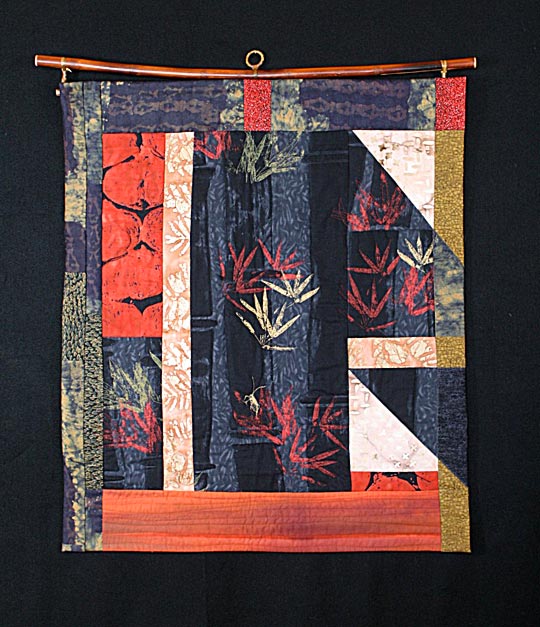
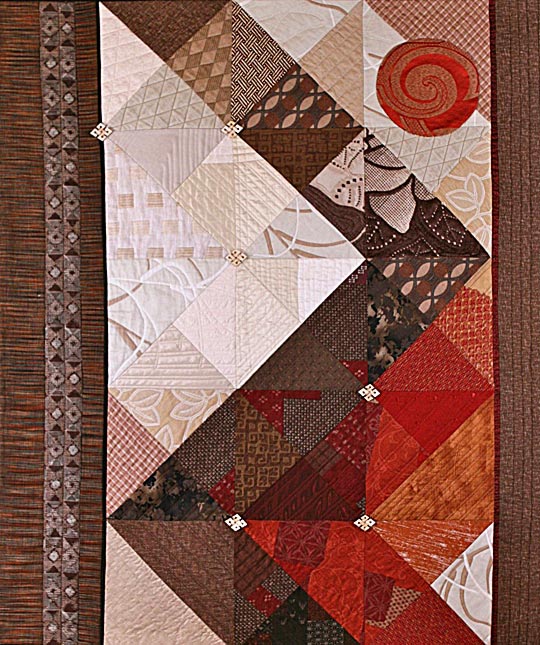
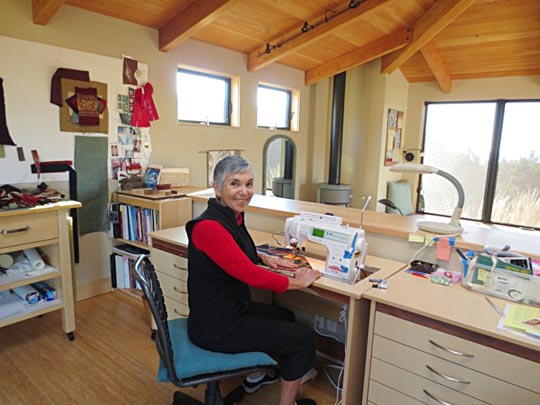
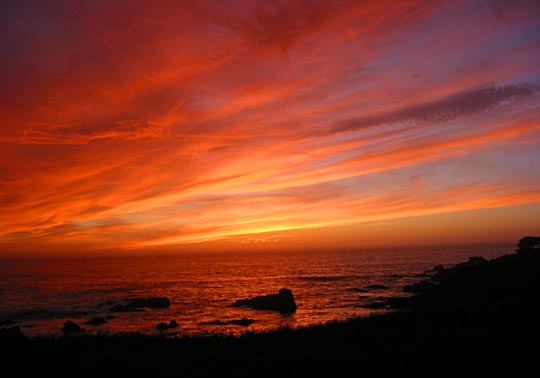
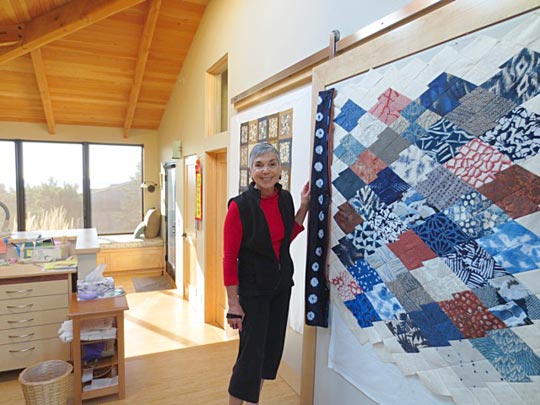
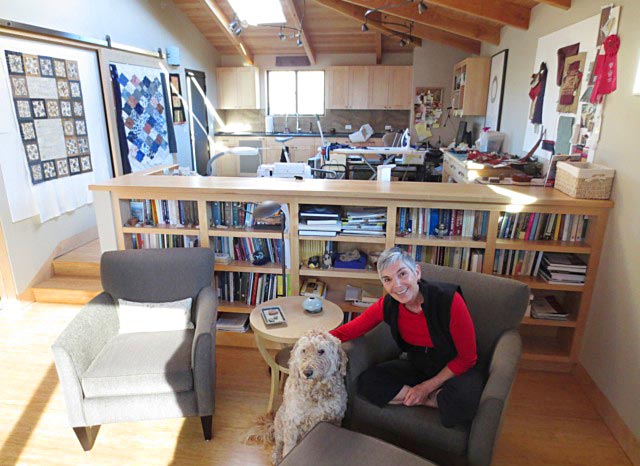
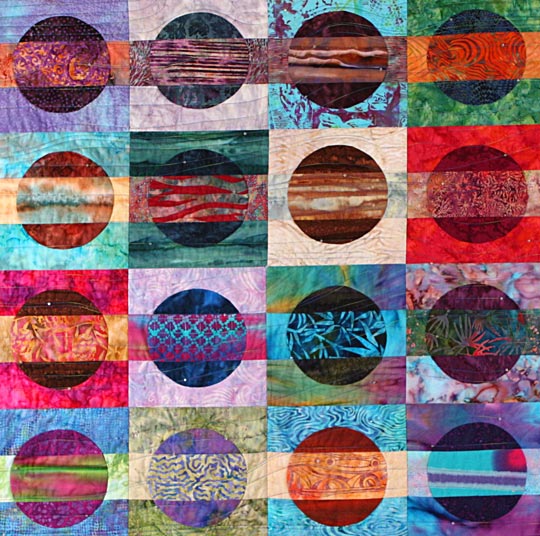
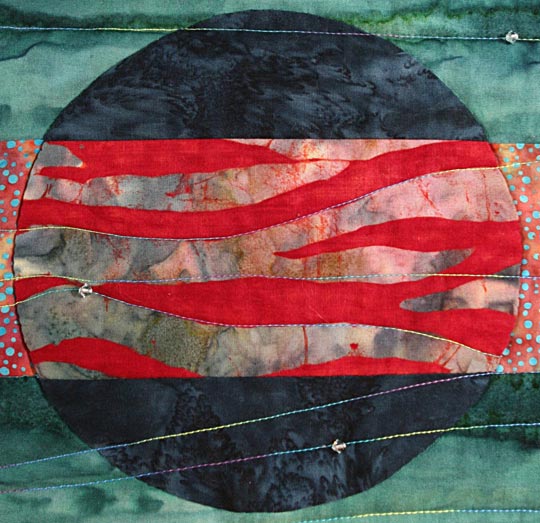
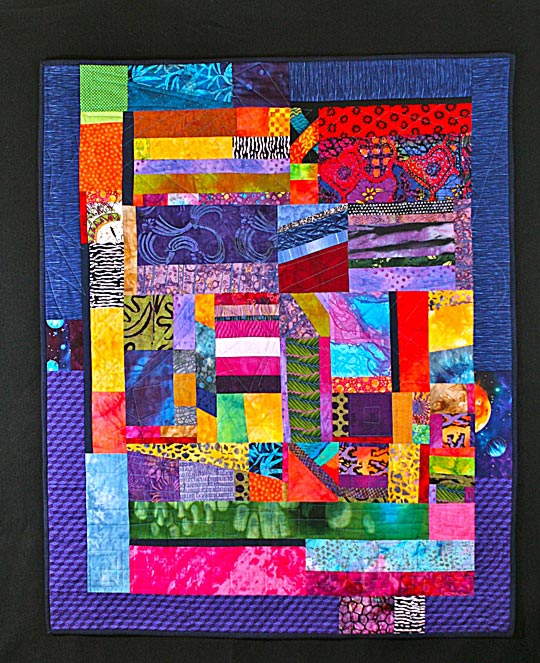















Dear Mirka,
We met and talked a few times at the Santa Fe conference. Glad to see how you’ve taken off into the art world! Your work is rich with meaning, and is very accessible to the viewer.
Keep it up!
Linda Laird
SAQA CO/UT/WY
Thanks so much, Linda.
I wish to thank you for sharing your thoughts on the meaning to you of art and quilting. I admire with what depths you explored and expressed your discoveries.
I appreciate also you sharing your blog and website and and the effort you put into it.
On 1/27 I am the featured artist at the EBHQ meeting (not the speaker). Ann
Thanks, Ann. And I know you’re putting in effort to create new work.
Lovely interview, Mirka. I am currently taking a class called “Leonardo and Michelangelo as Anatomists” taught by a wonderfully knowledgeable medical doctor. During the first session, he commented that he cannot appreciate modern art. I think he should read this interview to see how one modern artist thinks about art and the value you find in it. I think he is expecting just one kind of value, that expressed by the Renaissance masters.
Thanks, Anne. You’re making an interesting point. I think there’s a difference between having an aesthetic preference (mine inclines toward the Japanese arts) and confining oneself to one way of deeming certain works as art (in this case, only in the Renaissance style). I know someone who looks at modern art and says, “A five-year-old can do that.” The late Arthur C. Danto talks about how the way we once defined art has dramatically changed, beginning with the Impressionists, who were rejected by the Academy because their works were considered sketches, not finished paintings; they were not exact replicas of the subject matter, be it a person, landscape, vase of flowers. I don’t think it hurts any of us–rather, it enriches us–to open our minds and explore other ways of seeing. In a sense, it’s about opening our hearts to different kinds of people. We may not like them or want to be close friends (or hang their work on our walls), but we can recognize their right to be who they are, the way they are. Not always easy to do, but worth it.
Mirka, what a great interview and photos of your work and your workspace. And the view out your windows must be inspiring no matter the time of day! I enjoy all types of art quilts–pictorial and representational and am lately more involved with improvisational pieces. I have been a blogger for several years–a good way to share our work with others!
Martha Ginn
Thanks, Martha. Yes, my environment is inspirational and nourishing. I got a funny comment about it though: “If that’s what I saw out my windows, I’d never get any work done!”
Mirka
Congratululations on your interview.
Your art is indeed thought provoking, calming, peaceful
and beautiful.
Looking forward to seeing your next work.
Renata
I ‘discovered’ you and your incredible art/writing, etc. when I was reading Serena Woolrich, Allgenerations😂
Such beautiful inspirational work, really lifted my spirits today.
Thanks for this great interview
Mirka, what an interesting, thoughtful interview. How you combine your life experiences and practices with the influence of modern artists and classe and workshops to create some extraordinary quilts. Really enjoy seeing the detail of your work as well as the whole work. Look forward to seeing more of your work as we need more peace and beauty in our world. Peggy
What a wonderful interview Mirka!
You have a wonderful way of expressing yourself both in word and art.
Your work is truly beautiful.
Maria
Mirka, loosely, there are parallels of our journey in art. I was also taught many skills at my Mother’s knee and spent my career in law as a Paralegal. It has only been three (3) years since I found my one true love and passion — learning of and the creation of the voice of my art. I feel validated and relieved to know that it’s “okay” to not have a rich pedigree as others but that my own pedigree (my Mom and now me) is rich enough for me. Thank you. With warm regard, Ginger